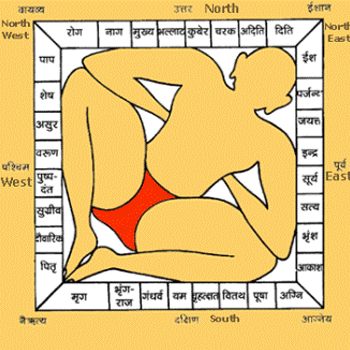About Vastu Shastra
Vastu Shastra is a traditional Hindu system of architecture which literally translates to "science of architecture. These are texts found on the Indian subcontinent that describe principles of design, layout, measurements, ground preparation, space arrangement and spatial geometry. Vastu Shastra incorporate traditional Hindu and in some cases Buddhist beliefs. The designs are intended to integrate architecture with nature, the relative functions of various parts of the structure, and ancient beliefs utilizing geometric patterns (Yantra), symmetry and directional alignments.
Vastu Shastra are the textual part of Vastu Vidya, the latter being the broader knowledge about architecture and design theories from ancient India. Vastu Vidya knowledge is a collection of ideas and concepts, with or without the support of layout diagrams, which are not rigid. Rather, these ideas and concepts are models for the organization of space and form within a building or collection of buildings, based on their functions in relation to each other, their usage and to the overall fabric of the Vastu.Ancient Vastu Shastra principles include those for the design of Mandir (Hindu temples) and the principles for the design and layout of houses, towns, cities, gardens, roads, water works, shops and other public areas.
The Sanskrit word Vastu means a dwelling or house with a corresponding plot of land. The Vastu takes the meaning of "the site or foundation of a house, site, ground, building or dwelling-place, habitation, homestead, house". The underlying root is vas "to dwell, live, stay, reside". The term Shastra may loosely be translated as "doctrine, teaching".









